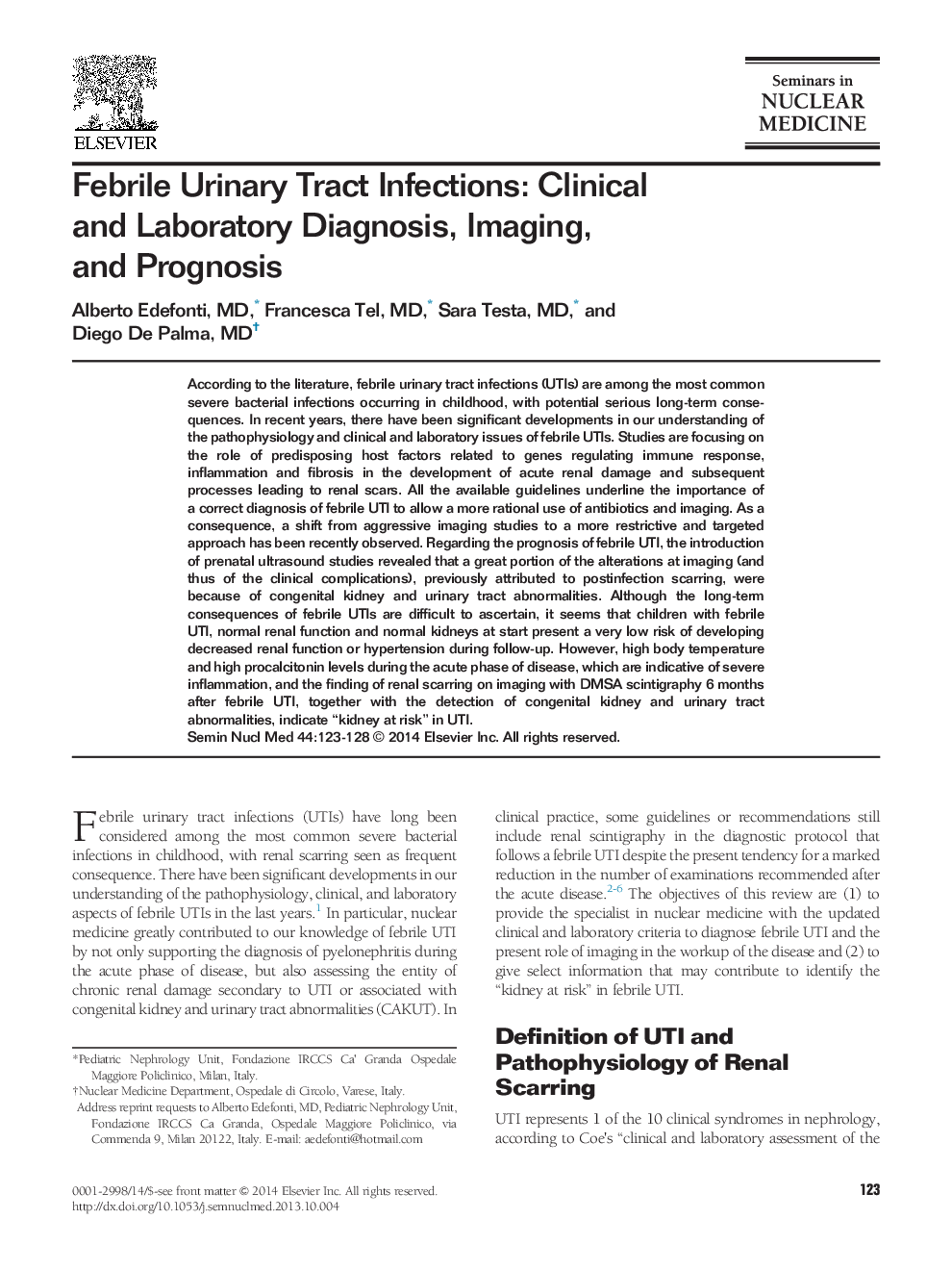| Article ID | Journal | Published Year | Pages | File Type |
|---|---|---|---|---|
| 4251014 | Seminars in Nuclear Medicine | 2014 | 6 Pages |
According to the literature, febrile urinary tract infections (UTIs) are among the most common severe bacterial infections occurring in childhood, with potential serious long-term consequences. In recent years, there have been significant developments in our understanding of the pathophysiology and clinical and laboratory issues of febrile UTIs. Studies are focusing on the role of predisposing host factors related to genes regulating immune response, inflammation and fibrosis in the development of acute renal damage and subsequent processes leading to renal scars. All the available guidelines underline the importance of a correct diagnosis of febrile UTI to allow a more rational use of antibiotics and imaging. As a consequence, a shift from aggressive imaging studies to a more restrictive and targeted approach has been recently observed. Regarding the prognosis of febrile UTI, the introduction of prenatal ultrasound studies revealed that a great portion of the alterations at imaging (and thus of the clinical complications), previously attributed to postinfection scarring, were because of congenital kidney and urinary tract abnormalities. Although the long-term consequences of febrile UTIs are difficult to ascertain, it seems that children with febrile UTI, normal renal function and normal kidneys at start present a very low risk of developing decreased renal function or hypertension during follow-up. However, high body temperature and high procalcitonin levels during the acute phase of disease, which are indicative of severe inflammation, and the finding of renal scarring on imaging with DMSA scintigraphy 6 months after febrile UTI, together with the detection of congenital kidney and urinary tract abnormalities, indicate “kidney at risk” in UTI.
